May 17, 2025 | 19:09 GMT +7
May 17, 2025 | 19:09 GMT +7
Hotline: 0913.378.918
May 17, 2025 | 19:09 GMT +7
Hotline: 0913.378.918
In the spring-summer crop of 2022, farmers in Quyet Chien commune, Tan Lac district (Hoa Binh) have planted 5 hectares of Shin Dong Ha radishes - a Korean radish variety (an increase of 4 hectares compared to the previous crop of this vegetable variety). It is expected that from April 15, Shin Dong Ha's radish growing areas will be ready for harvest, the output is estimated at over 400 tons of tubers. The product has been contracted by VietGAP Quyet Chien Vegetable Cooperative with an average price of 10,000 VND/kg.

Muong farmers in Quyet Chien commune were amazed at the locally grown Korean radish variety. Photo: H.Tien.
Mr. Duong Van Tu, Deputy Director of Hoa Binh Agricultural Extension Center said: Korean Shin Dong Ha radish variety has been transferred by the Fruit and Vegetable Research Institute (Vietnam Academy of Agricultural Sciences) to farmers for the winter 2021 crop. Because the yield and quality are not familiar, in the first year, farmers only planted 1ha in Buong hamlet, Quyet Chien commune.
Thanks to the suitable ecological conditions in the high mountains here, the variety has given an exceptional yield, reaching over 80 tons of tubers/ha. The tubers are especially big, with many as big as a 2 liter thermos, sweeter and softer than the radish varieties grown in the area previously. Accordingly, this spring-summer crop, the locality has expanded the Shin Dong Ha radish growing area by 5 times.
Mr. Bui Van Khanh, a farmer who planted 0.4ha of radishes in the winter 2021 crop, has obtained up to 33 tons of grade 1 tubers. After selling all the harvest, paying for fertilizers and other planting materials, Mr. Khanh made a profit of over 130 million dong. Due to limited arable land, this spring-summer crop, Mr. Khanh can only grow 0.5ha of Korean radish, soon to be harvested. It is expected to yield and generate the same income as the previous radish crop.
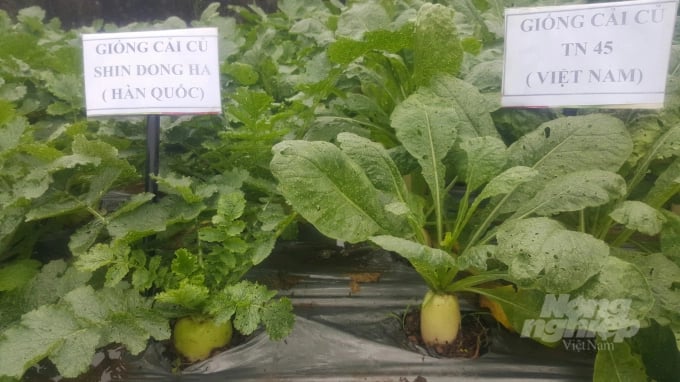
Korean radish (right) and control radish grown in Quyet Chien commune, Tan Lac district (Hoa Binh). Photo: H. Tien.
Ms. Bui Thi Tan shared: At first, many households were hesitant to plant the new radish variety. After seeing the scientific staffs enthusiastically extended their hands to help farmers, they felt confident enough to put the seeds into trial production. As a result, Ms. Tan planted 0.3 hectares of Korean radish, earning nearly 100 million VND.
Ms. Bui Thi Bac waited to observe the effectiveness of Korean radish cultivation from other households, then decided to convert 0.3ha of Meo cabbage to radishes. Through actual production, Ms. Bac commented: Korean radish grows and develops very well, rarely requires pesticides, the flesh of the tubers is dense, delicious, sweet and cool, not as bitter as our radish.
"My children also eat raw radishes with powdered soup. I have never in my life seen a radish as big and large as the one I'm currently growing," said Ms. Bac admiringly.
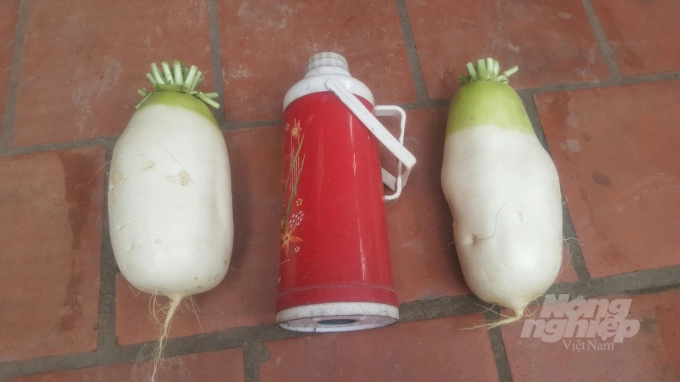
Korean radish is almost as big as a 2 liter thermos. Photo: H.Tien.
Ms. Dinh Thi Quyet, Director of VietGAP Quyet Chien Vegetable Cooperative said: She often purchases and brings Korean radish to Bac Ninh and Bac Giang to sell, which is favored by the market there. Many Chinese people working in the localities, without vegetables to eat, waited to buy Ms. Quyet's radish, then put it in the refrigerator for preservation and later use.
According to MSc. Hoang Minh Chau (Fruit and Vegetable Research Institute), Shin Dong Ha radish varieties were imported from Korea, tested by scientists of the Fruit and Vegetable Research Institute then popularized for mass production. This variety has been confirmed to be very suitable for the winter and winter-spring crops in the Red River Delta provinces, the mountainous areas of Sa Pa, Da Lat and Moc Chau all year round.
The variety has many advantages: Short growth time, simple cultivation process, no need to prune seedlings like domestic radish varieties, tubers are ready for harvest from 60-90 days old. Plants grow and develop well, leaves are hairy making it difficult for pests to attack, requiring less pesticides.
Additionally, thanks to the standing set of leaves along with the large day-night temperature difference (usually only in high mountainous areas), this helps to increase the photosynthetic efficiency, giving high quality and very high yield of up to 80-85 tons of tubers/ha/crop. The product is suitable for fresh consumption, for kimchi or for drying.
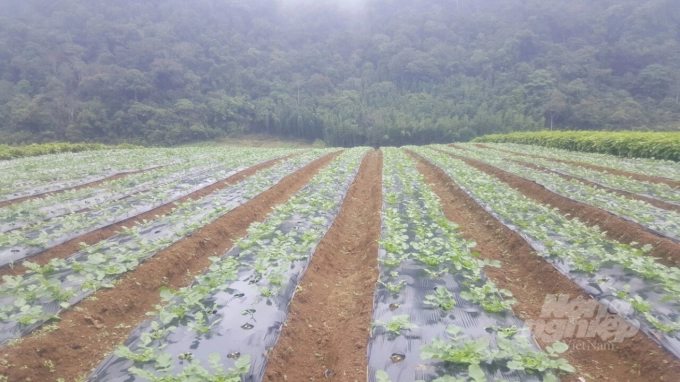
Households continue to expand the area of Korean radish growing. Photo: H.Tien.
Some other distinguishing characteristics of the Shin Dong Ha radish varieties include: dark green, lobed leaves. Oblong tubers (1/3 of the top is green, the bottom 2/3 are white) with the average weight of 1-1.2kg/tube. The flesh of the tuber is thick and smooth, the taste is sweet and cool and the core is not soft when harvested late. Thereby, it is possible to naturally preserve radishes in the field. In addition to the main tuber parts for harvesting, the leaves are also edible.
“It is estimated that there are currently about 600,000 Korean experts, students and high-level workers living and working in our country. This will be a major consumption source of vegetables originating from this country.
Therefore, mass production of the Shin Dong Ha radish variety also contributes to diversifying the domestic vegetable market, repel small-scale imported vegetables, which are difficult to control regarding food hygiene and safety", Assoc. Dr. Nguyen Quoc Hung, Director of the Fruit and Vegetable Research Institute informed.
Translated by Nguyen Hai Long
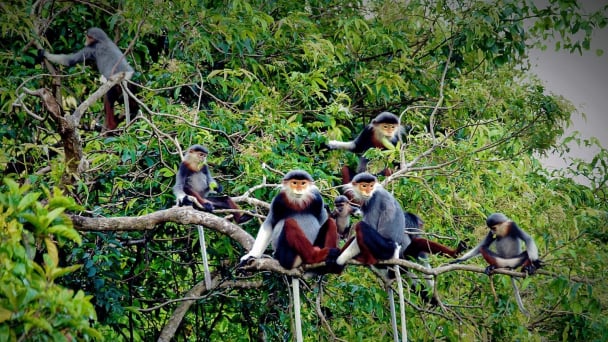
(VAN) The United Nations designated 22 May as the International Day for Biodiversity 2025 with the theme 'Harmony with nature and sustainable development.'
![Multi-channel, multi-directional Vietnamese agricultural markets: [8] A national strategy is needed](https://t.ex-cdn.com/nongnghiepmoitruong.vn/608w/files/phucpm/2025/05/15/1435-thi-truong-nong-san-viet-da-kenh-da-huongbai-8-can-mot-chien-luoc-quoc-gia-084750_728.jpg)
(VAN) The Chairman of Hung Nhon Group shared: ‘Opening up and tapping into new markets is the right and strategic direction for Vietnam's agricultural sector.’

(VAN) Food waste has become a serious issue in modern society, especially in rapidly urbanizing and developing cities like Hanoi.
![Multi-channel, multi-directional Vietnamese agricultural markets: [7] Deep processing makes global reach easy](https://t.ex-cdn.com/nongnghiepmoitruong.vn/608w/files/huytd/2025/05/16/2946-che-bien-sau-chia-khoa-vang-nang-tam-nong-san-viet-tren-ban-do-the-gioi-080603_110-093858.jpg)
(VAN) The application of deep processing technology is helping Vietnamese agricultural products enhance their value, create competitive advantages, and open doors to conquer global consumers.
![Multi-channel, multi-directional Vietnamese agricultural markets: [6] Agri products go online](https://t.ex-cdn.com/nongnghiepmoitruong.vn/608w/files/content/2024/12/10/1-113313_954.jpg)
(VAN) Bringing agri products onto e-commerce platforms is an effective way to build a brand that many businesses, cooperatives, and agricultural production households are doing.
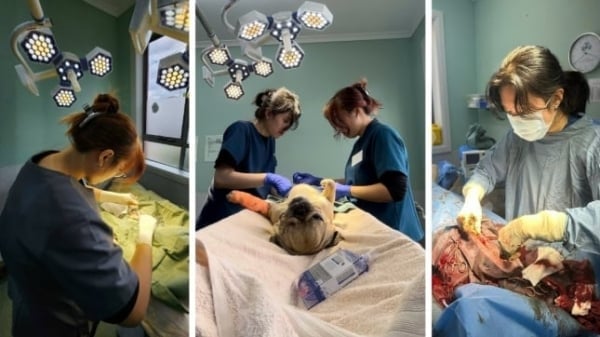
(VAN) Veterinary training should focus on quality, not just quantity. Veterinarians also need more options to pursue specialized training.
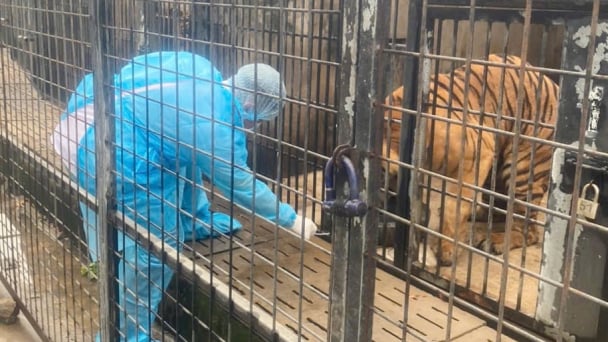
(VAN) The veterinary industry needs to be viewed objectively and further invested in to properly demonstrate its role and importance in the new context.